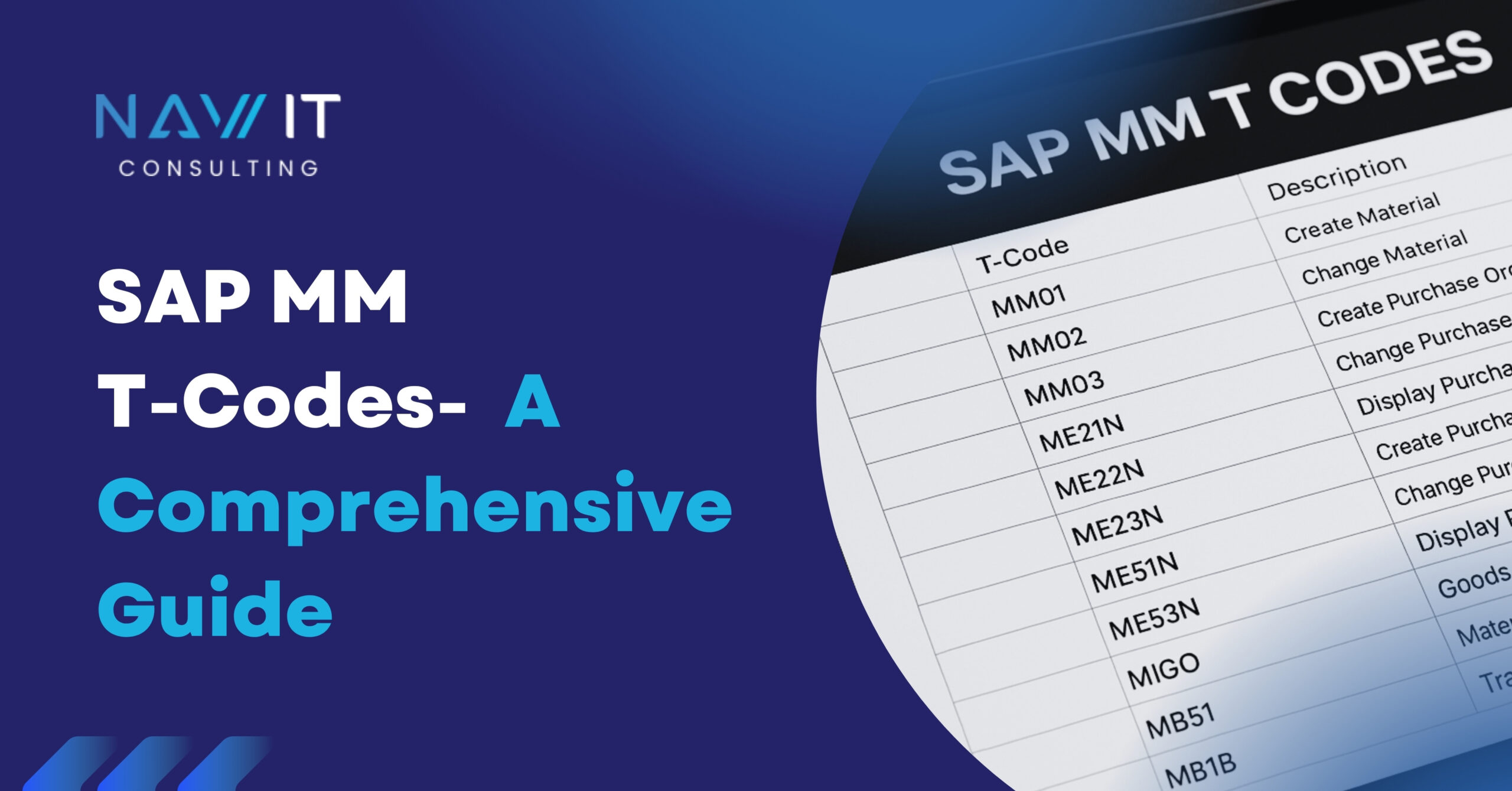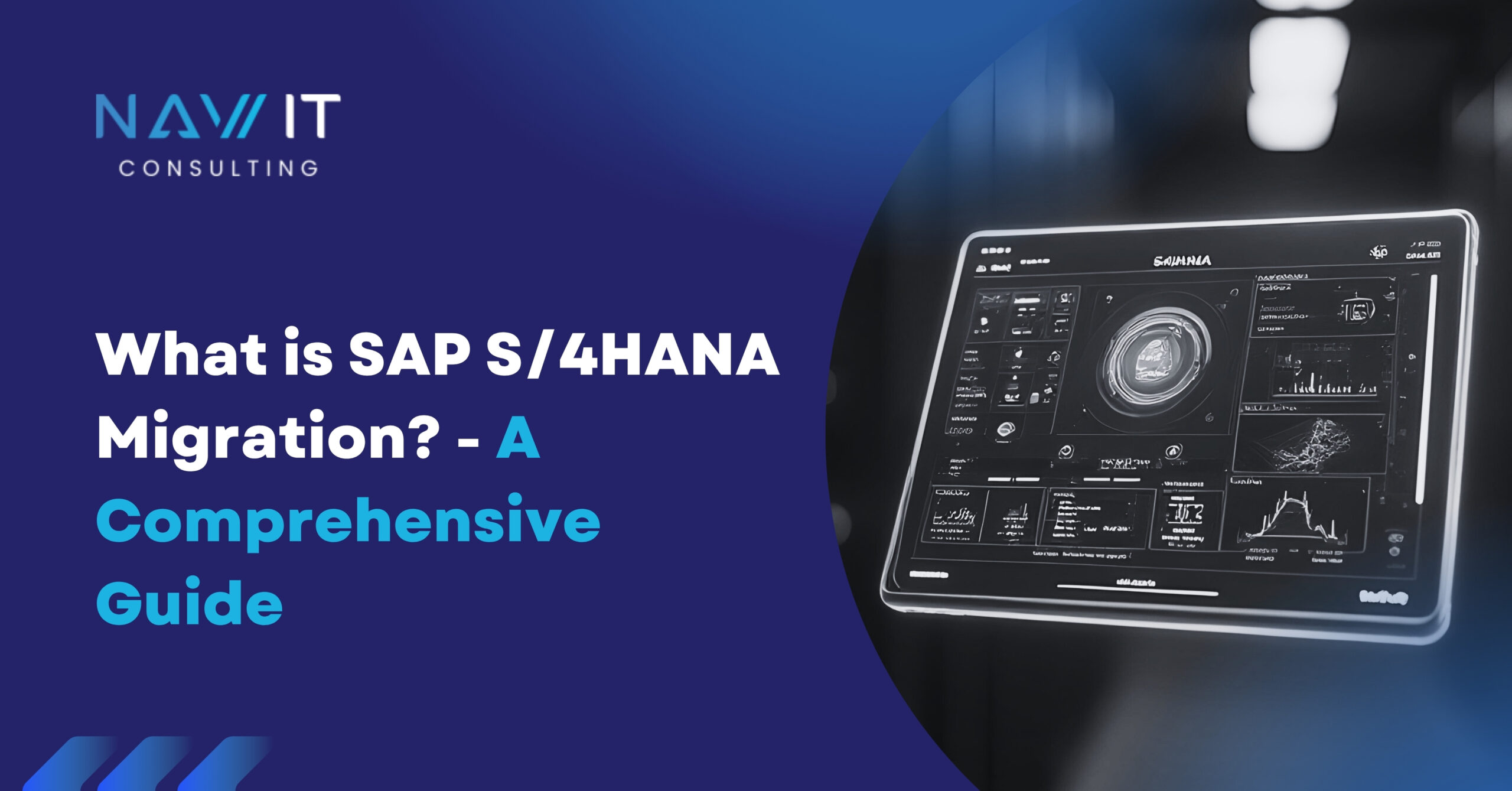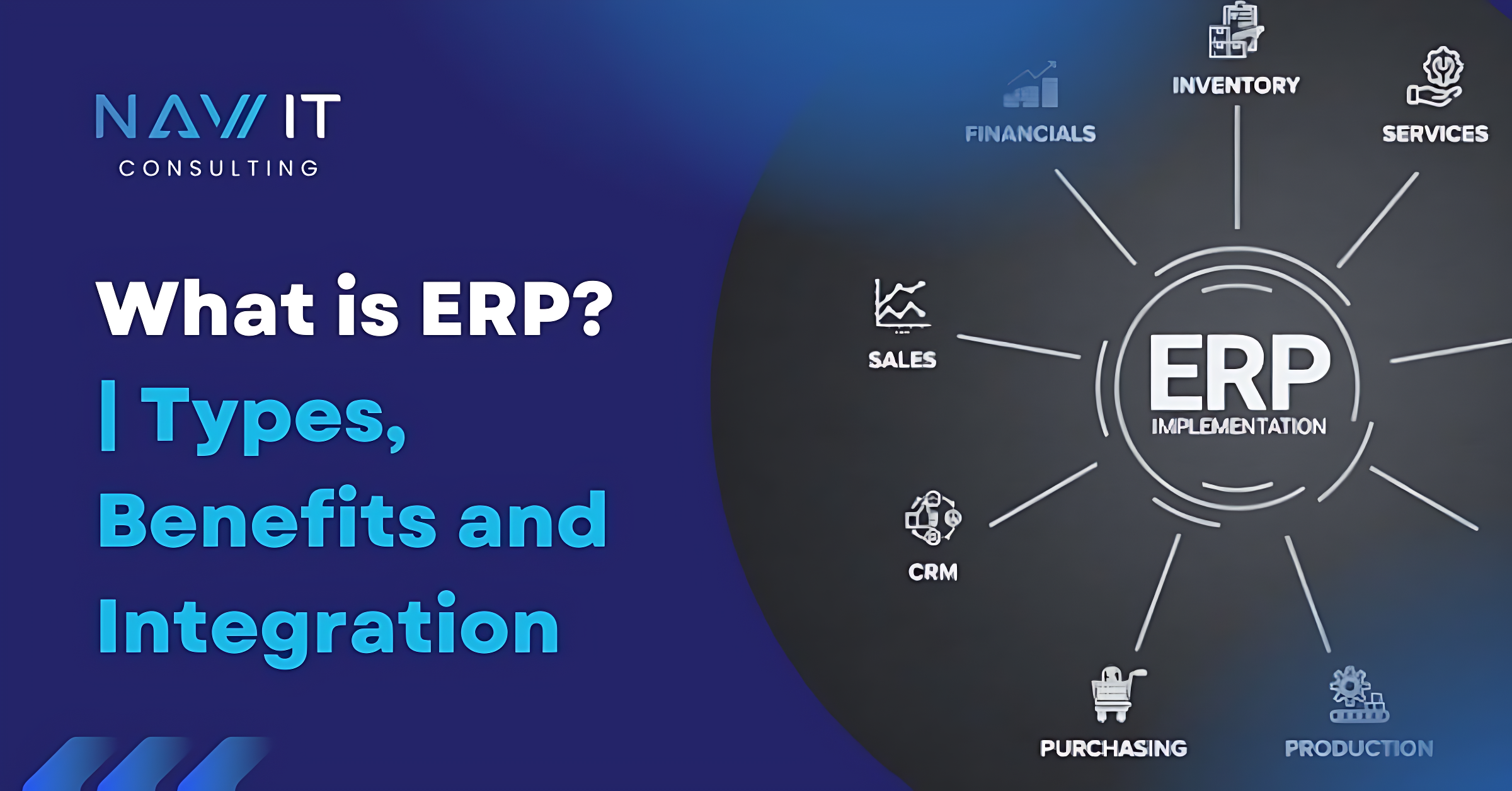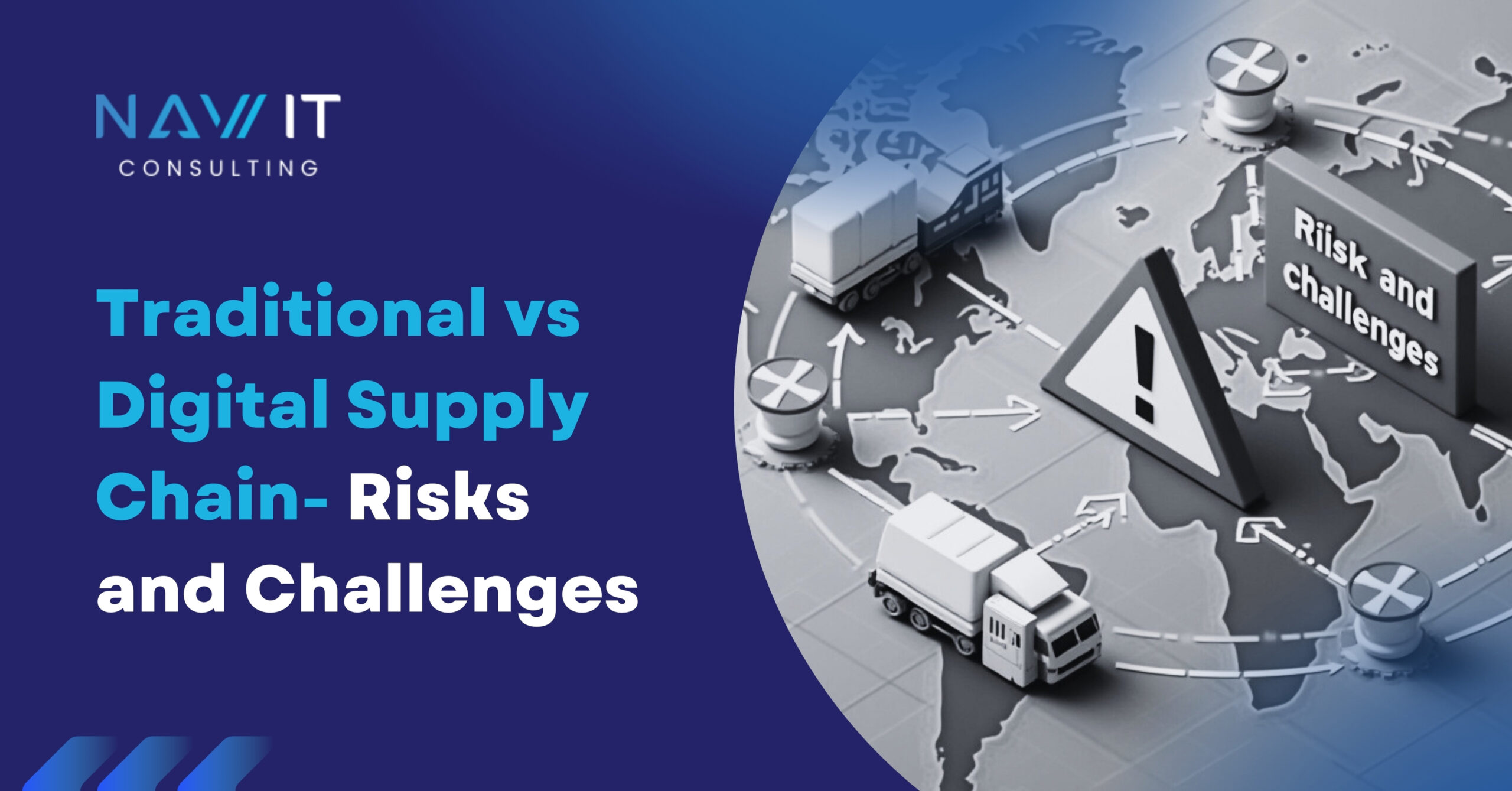A global electronics manufacturer is gearing up for the holiday season. Last year, they faced massive losses due to stock shortages, delayed shipments, and inaccurate demand predictions. This time, they decide to rely on AI-powered forecasting.
As Black Friday approaches, their AI system processes real-time sales trends, weather patterns, geopolitical events, and social media buzz to predict which products will sell out first. It automatically adjusts inventory levels, reroutes shipments based on traffic conditions, and even identifies potential supplier delays before they happen. The result? Zero stockouts, faster deliveries, and a 20% increase in revenue compared to the previous year.
Now, here’s the question: Can AI truly evolve and improve supply chain efficiency over time, or is it just another short-term fix? Are we looking at a future where supply chains run on autopilot, or will human oversight always be necessary?
Let’s explore how AI in supply chain management is changing—and whether it’s the future or just another overhyped trend.
Can AI Get Better with Time?
Imagine an AI system deployed to manage the supply chain for a multinational retailer. Initially, it operates based on predefined rules, analyzing historical sales data to predict inventory needs. But then, something unexpected happens—a sudden shift in consumer demand due to a viral trend. The AI’s initial forecasts are off, leading to stockouts in some regions and overstock in others.
However, unlike traditional rule-based systems, this AI in supply chain isn’t static. Instead of continuing with outdated predictions, it begins learning from real-time data. It picks up on social media trends, analyzes website traffic patterns, and factors in sudden spikes in demand. Within days, it refines its forecasting model, ensuring the next supply cycle is more aligned with actual consumer behavior.
The Learning Mechanism: How AI in Supply Chain Improves Over Time
AI’s ability to get better with time comes from a combination of machine learning (ML), deep learning, and data analytics. Unlike human-led decision-making, which relies on experience and intuition, AI continuously processes new data, adjusting its algorithms to improve performance.
1. Data-Driven Adaptation – AI in supply chain models rely on vast amounts of structured and unstructured data, such as past sales records, supplier reliability scores, and external factors like weather disruptions or economic conditions. Each time a new dataset is introduced, AI recalibrates its predictions, ensuring greater accuracy in future forecasts.
2. Feedback Loops and Reinforcement Learning – AI systems operate on feedback loops. If an AI-based demand forecasting system predicts 100,000 units of a product will sell, but actual sales are 120,000, the system registers this deviation. It then modifies its future calculations, considering the discrepancy as a learning input. Reinforcement learning enables AI to make increasingly precise decisions over time.
3. Pattern Recognition and Anomaly Detection – AI systems are exceptionally good at identifying patterns that humans might overlook. By continuously analyzing supply chain data, AI can detect emerging trends, seasonal shifts, and even potential fraud in supplier transactions. Conversely, if something appears out of the ordinary, such as a sudden drop in supplier fulfillment rates, AI flags it as an anomaly, prompting proactive intervention.
4. Simulation and Scenario Testing – AI-powered supply chain systems don’t just react to changes—they simulate potential outcomes. Using historical data and predictive modeling, AI can generate thousands of “what-if” scenarios, testing how supply chains would react to various factors like supplier shutdowns, transportation delays, or currency fluctuations. Over time, these simulations train AI models to make smarter real-world decisions.
5. Cross-Industry Learning – AI systems don’t operate in isolation. Many advanced AI models are trained on diverse industry data before being fine-tuned for a specific supply chain. This means that an AI originally developed for automotive logistics could adapt its learnings to a retail supply chain, leveraging cross-industry insights to make better predictions.
The Reality Check: AI is Only as Smart as Its Data
While AI has the potential to continuously improve, there’s a key limitation—data quality. AI only learns and refines itself when fed with accurate, relevant, and timely data. Without this, it risks making misleading forecasts, optimizing for outdated trends, or failing to detect critical disruptions.
Moreover, AI systems require constant monitoring and fine-tuning. Businesses must invest in:
- Regular data audits to remove inaccuracies or biases.
- Integration with IoT and real-time tracking systems for up-to-the-minute updates.
- Human oversight to validate AI-driven decisions, ensuring they align with business goals.
So, Does AI Truly Get Better Over Time?
Yes, AI improves with time, but only under the right conditions. If an AI-powered supply chain system is continuously trained on fresh, high-quality data and exposed to real-world scenarios, it can evolve into an exceptionally efficient decision-making tool. However, without proper data governance, AI remains static, unable to grow beyond its initial capabilities.
This brings us to a crucial question: Why is AI in supply chain no longer an option but a necessity? Let’s explore in the next section
Why AI in Supply Chain Management No Longer Optional
Supply chains must be smarter, faster, and more efficient than ever before. Companies can no longer rely on old, reactive methods to manage their supply chains—they need predictive, AI in supply chain solutions to stay competitive. Artificial Intelligence (AI) is no longer just a helpful tool; it has become a necessity for businesses that want to survive and thrive. Here’s why:
1. The Shift from Reactive to Predictive Decision-Making
Traditionally, supply chain management relied on reactive strategies—companies would respond to problems only after they happened. For example:
- If a shipment was delayed, managers would scramble to find alternatives.
- If demand suddenly spiked, warehouses would rush to restock, often leading to higher costs.
- If a supplier failed to deliver, businesses would face shortages and unhappy customers.
AI changes this by enabling predictive decision-making. Instead of waiting for disruptions, AI forecasts issues before they happen and suggests the best actions. Here’s how:
- Demand Forecasting: AI analyzes past sales, market trends, and even weather patterns to predict future demand accurately. This helps businesses stock the right amount of inventory—avoiding both shortages and excess waste.
- Real-Time Adjustments: AI in supply chain monitors data in real-time, detecting delays or risks early so companies can adjust before problems grow.
- Automated Optimization: AI continuously evaluates the best routes, suppliers, and warehouse operations, making supply chains faster and more cost-efficient.
Without AI, companies are stuck in a cycle of firefighting problems rather than preventing them.
2. AI’s Role in Mitigating Risks Like Demand Fluctuations, Logistics Delays, and Supplier Uncertainties
Supply chains face constant risks—some predictable, others unexpected. AI helps manage these risks by:
Stabilizing Demand Fluctuations
- Sudden changes in customer demand can lead to overstocking or stockouts, both of which hurt profits.
- AI uses machine learning to detect patterns and predict demand shifts, allowing businesses to adjust production and inventory in advance.
Reducing Logistics Delays
- Shipping delays, port congestion, and transportation breakdowns can disrupt entire supply chains.
- AI-powered route optimization finds the fastest, cheapest, and most reliable shipping paths.
- Some AI systems even predict delays (like bad weather or traffic) and reroute shipments automatically.
Managing Supplier Uncertainties
- If a key supplier fails, companies without backup plans face major disruptions.
- AI evaluates supplier performance, tracks geopolitical risks, and suggests alternative suppliers before a crisis hits.
By using AI in supply chains, businesses reduce downtime, cut costs, and keep operations running smoothly, even when unexpected problems arise.
3. The Competitive Advantage: Why Companies That Fail to Adopt AI Risk Falling Behind
Businesses that ignore AI in supply chains are at a serious disadvantage. Here’s why:
- Faster, Smarter Decisions: AI processes vast amounts of data in seconds—something humans can’t do. Companies using AI make better decisions faster, while competitors relying on manual methods fall behind.
- Cost Efficiency: AI reduces waste, optimizes shipping, and prevents expensive disruptions. Companies without AI spend more on emergencies and inefficiencies.
- Customer Satisfaction: Today’s customers expect fast, reliable deliveries. AI helps businesses meet these expectations by preventing delays and stockouts. Companies that fail to adopt AI risk losing customers to competitors who deliver better service.
- Future-Proofing: As AI technology improves, the gap between AI-powered companies and traditional ones will grow. Businesses that wait too long to adopt AI may struggle to catch up.
How AI in Supply Chain Changing
Artificial Intelligence (AI) is fundamentally transforming supply chains by introducing unprecedented levels of efficiency, accuracy, and adaptability. One of the most impactful applications of AI in supply chain management is in demand forecasting and inventory optimization. Traditional supply chains often struggle with inefficiencies such as overstocking, stockouts, and delayed responses to market changes. However, AI-powered systems are now enabling businesses to predict demand with remarkable precision, optimize stock levels in real time, and drastically reduce waste.
A. AI-Powered Demand Forecasting & Inventory Optimization
1. Predicting Seasonal and Market-Driven Demand Shifts with AI
The Limitations of Traditional Forecasting
- Historically, businesses relied on manual forecasting methods, which involved analyzing past sales data, market trends, and human intuition.
- These methods were often slow, error-prone, and reactive, leading to either excess inventory or shortages.
- Sudden market shifts (e.g., a viral product trend or an unexpected weather event) could disrupt supply chains before companies could adjust.
How AI Enhances Demand Prediction
AI leverages machine learning (ML) algorithms to analyze vast amounts of structured and unstructured data, including:
- Historical sales data – Identifying patterns in past purchases.
- External factors – Weather forecasts, economic indicators, and geopolitical events.
- Consumer behavior – Social media trends, online searches, and competitor pricing.
- Real-time sales data – Adjusting predictions as new transactions occur.
Key Benefits of AI-Driven Demand Forecasting
- Higher accuracy – AI reduces forecasting errors by up to 50% compared to traditional methods.
- Dynamic adjustments – Models continuously learn and improve, adapting to sudden market changes.
- Granular insights – AI can predict demand at a regional or even store-by-store level, ensuring optimal stock distribution.
2. Reducing Overstocking and Stockouts Using Predictive Analytics
The Cost of Poor Inventory Management Overstocking leads to:
- Increased warehousing costs.
- Products expiring or becoming obsolete (e.g., fashion, electronics).
- Forced discounting, reducing profit margins.
Stockouts result in:
- Lost sales and dissatisfied customers.
- Damage to brand reputation (customers may switch to competitors).
How AI Optimizes Inventory Levels
- AI-driven inventory management systems:
- Predict optimal stock levels for each product based on demand forecasts.
- Automate replenishment by triggering orders when stock reaches a threshold.
- Identify slow-moving items and recommend promotions or alternative distribution strategies.
- Adjust for supply chain disruptions (e.g., delays from suppliers) by rerouting inventory.
Case Study: AI in Supply Chain Retail Inventory Management
- A major fashion retailer used AI to reduce excess inventory by 30% while cutting stockouts by 25%.
- By analyzing real-time sales and returns data, the system flagged underperforming products early, allowing faster markdowns.
3. Example: How Walmart Uses AI to Optimize Inventory Replenishment
Walmart’s AI-Powered Supply Chain
As the world’s largest retailer, Walmart handles millions of stock-keeping units (SKUs) across thousands of stores. Managing inventory manually would be impossible, so Walmart relies on AI and big data analytics to stay ahead.
How Walmart’s AI System Works
1. Data Collection & Analysis
- AI processes sales data from stores, online orders, and supplier inputs.
- It tracks local buying habits (e.g., certain products sell more in urban vs. rural stores).
- External data like weather forecasts (e.g., more umbrellas stocked before a storm).
2. Automated Replenishment
- AI predicts when a product will run out and automatically places orders with suppliers.
- It adjusts orders based on real-time sales spikes (e.g., during Black Friday).
3. Pricing Optimization
- AI identifies overstocked items and suggests dynamic pricing strategies (e.g., discounts to clear inventory).
- It also detects high-demand items and adjusts pricing to maximize profits.
Results of Walmart’s AI Implementation
- Reduced stockouts by 20-30%, ensuring shelves are rarely empty.
- Lowered excess inventory costs by optimizing warehouse storage.
- Improved supplier coordination by predicting demand fluctuations in advance.
Future Trends in AI-Driven Supply Chains
1. Hyper-Personalized Demand Forecasting
AI will predict demand at an individual customer level using purchase history and preferences.
2. Autonomous Supply Chains
Self-adjusting logistics where AI manages ordering, shipping, and warehousing without human intervention.
3. Blockchain + AI for Transparency
Combining AI with blockchain to track product origins, ethical sourcing, and counterfeit prevention.
AI in Supply Chain Manufacturing: Saving Time, Effort, and Costs
Artificial Intelligence (AI) is transforming the manufacturing industry by making processes faster, more efficient, and cost-effective. By using AI, factories can predict machine failures, automate production, and improve product quality. Below, we explore three major ways AI is helping manufacturers save time, effort, and money.
1. Predictive Maintenance: How AI Prevents Costly Equipment Failures Before They Happen
What is Predictive Maintenance?
Predictive maintenance uses AI to monitor machines and predict when they might fail. Instead of waiting for a breakdown or following a fixed maintenance schedule, AI analyzes data to detect early warning signs.
How Does AI Do This?
- Sensors Collect Data: Machines are fitted with sensors that track temperature, vibration, noise, and other factors.
- AI Analyzes Patterns: The AI system compares real-time data with past records to spot unusual patterns.
- Alerts Before Failure: If the AI detects a potential problem, it alerts technicians to fix the issue before the machine breaks down.
Benefits of Predictive Maintenance
- Reduces Downtime: Factories avoid unexpected stops in production.
- Saves Money: Fixing small issues early prevents expensive repairs.
- Extends Machine Life: Regular, AI-guided maintenance keeps machines running longer.
2. Automated Production Lines: AI’s Role in Reducing Human Error and Improving Speed
How AI Automates Manufacturing
AI-powered robots and machines handle repetitive tasks with high precision. Unlike humans, they don’t get tired or make mistakes due to fatigue.
Key Applications of AI in Supply Chain Automation
- Robotic Arms: AI-controlled robots assemble products faster than humans.
- Self-Optimizing Machines: AI adjusts machine settings in real time for better efficiency.
- Smart Inventory Management: AI tracks materials and orders new supplies automatically.
Advantages of AI in Supply Chain Automation
- Fewer Errors: AI reduces mistakes in assembly, leading to better-quality products.
- Faster Production: Machines work non-stop, speeding up manufacturing.
- Lower Labor Costs: Factories need fewer workers for repetitive tasks.
3. AI in Supply Chain Quality Assurance: Catching Defects Before Products Reach the Market
How AI Improves Quality Control
Traditionally, workers inspect products manually, which is slow and can miss defects. AI-powered vision systems scan products at high speed with extreme accuracy.
How AI Detects Defects
- Computer Vision: AI cameras examine products for scratches, dents, or incorrect shapes.
- Machine Learning: The system learns from past defects to identify new ones.
- Instant Rejection: If a product is faulty, AI removes it from the production line immediately.
Why AI Quality Assurance Matters
- Fewer Recalls: Catching defects early prevents costly product returns.
- Higher Customer Satisfaction: Only flawless products reach customers.
- Less Waste: Factories save money by fixing issues early instead of discarding bad products.
The Future of AI in Supply Chain: What’s Next?
Artificial Intelligence (AI) is transforming supply chains, making them faster, smarter, and more efficient. But what does the future hold? Will AI take full control, or will human oversight remain necessary? How will ethical concerns and new technologies shape the next generation of supply chains? Let’s explore the key developments ahead.
Will AI-Led Supply Chains Become Fully Autonomous?
AI supply chain is already automating many tasks, from demand forecasting to warehouse robotics. But will supply chains become completely self-running? Here’s what to expect:
1. Increased Automation, But Not Full Independence
- AI can optimize inventory, predict delays, and even automate procurement.
- However, human judgment is still needed for complex decisions, crisis management, and supplier relationships.
- Fully autonomous supply chains may emerge in controlled environments (e.g., closed-loop manufacturing), but most industries will keep human oversight.
2. Self-Learning Systems for Better Adaptability
- AI models will improve through machine learning, adjusting to disruptions like weather, demand spikes, or geopolitical issues.
- Reinforcement learning (where AI learns from trial and error) could help systems optimize routes and logistics in real time.
3. AI-Powered Predictive and Prescriptive Analytics
- Beyond just predicting demand, AI will prescribe actions—like rerouting shipments or adjusting production—before problems arise.
- This reduces waste, lowers costs, and improves efficiency.
Ethical and Regulatory Concerns in AI-Driven Decision-Making
As AI in supply chains takes a bigger role, ethical and legal challenges arise:
1. Bias in AI Decision-Making
- AI learns from historical data, which may contain biases (e.g., favoring certain suppliers or regions).
- If unchecked, this could lead to unfair practices or discrimination.
2. Accountability for AI Mistakes
- If an AI system makes a wrong decision (e.g., rejecting a valid shipment), who is responsible—the company, the developer, or the AI itself?
- Clear regulations will be needed to define liability.
3. Job Displacement and Workforce Impact
- Automation may reduce jobs in warehousing, logistics, and procurement.
- Companies must invest in reskilling workers for AI-augmented roles.
4. Data Privacy and Security Risks
- AI relies on vast amounts of data, raising concerns about cyberattacks and misuse.
- Regulations like GDPR (in Europe) and new AI laws will shape how companies handle data.
- The Integration of AI with Blockchain and IoT for Smarter, More Transparent Supply Chains
- AI alone is powerful, but combined with blockchain and the Internet of Things (IoT), it can revolutionize supply chains further.
1. AI + IoT: Real-Time Tracking and Smart Logistics
- IoT sensors monitor shipments (temperature, location, delays) and send data to AI systems.
- AI analyzes this data to predict delays, adjust routes, or prevent spoilage (e.g., in food supply chains).
2. AI + Blockchain: Secure and Transparent Transactions
- Blockchain provides an unchangeable record of every transaction (shipments, payments, contracts).
- AI can verify data on blockchain to detect fraud (e.g., fake products) and ensure compliance.
3. End-to-End Visibility and Trust
- Together, these technologies create a fully traceable supply chain, from raw materials to delivery.
- Consumers can scan a product and see its entire journey, ensuring authenticity (e.g., in luxury goods or pharmaceuticals).
Conclusion
The future of AI in supply chains is not just about automation—it’s about intelligent collaboration between humans and machines. While AI will handle repetitive tasks, humans will oversee strategy and ethics. Meanwhile, blockchain and IoT will enhance security and visibility.
The key challenges? Regulations, fairness, and workforce adaptation. Companies that balance innovation with responsibility will lead the next era of supply chain management. Would you trust an AI-managed supply chain? The answer may depend on how well these systems address ethical and security concerns in the years ahead.









